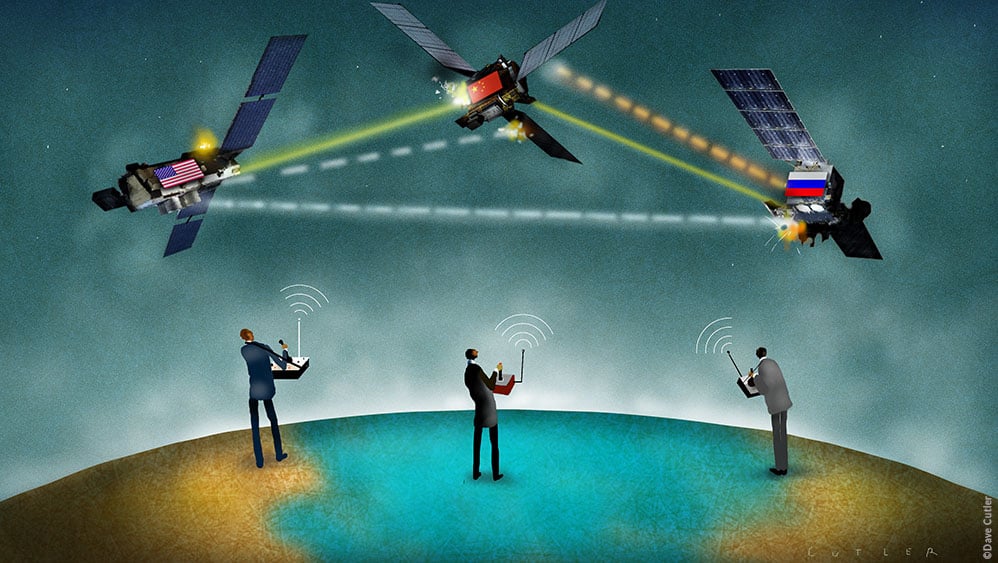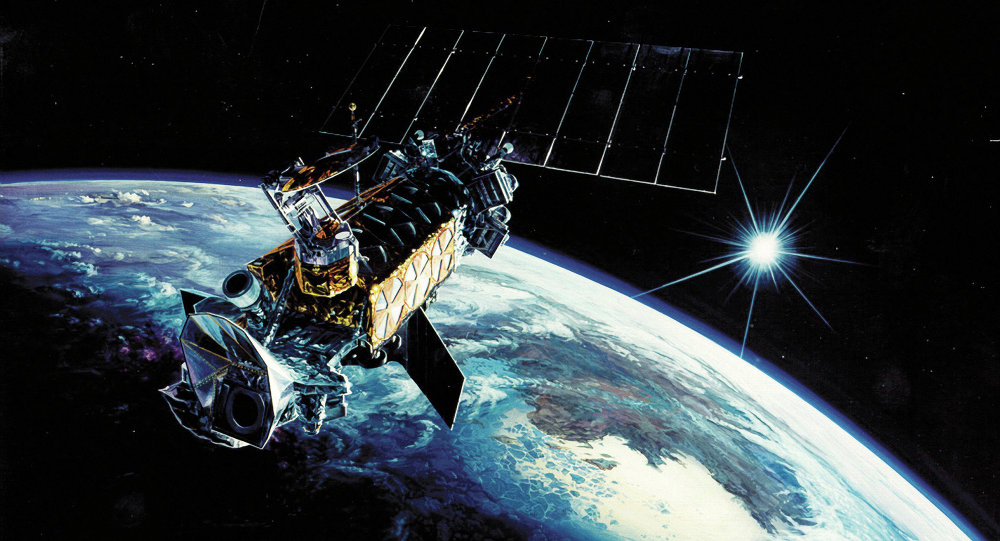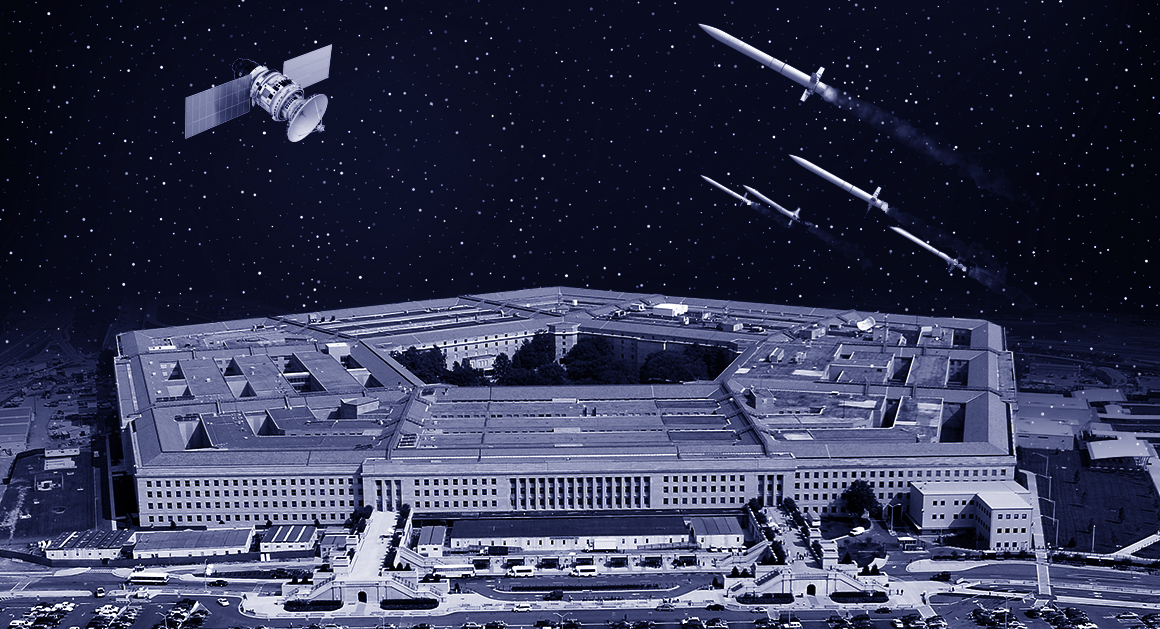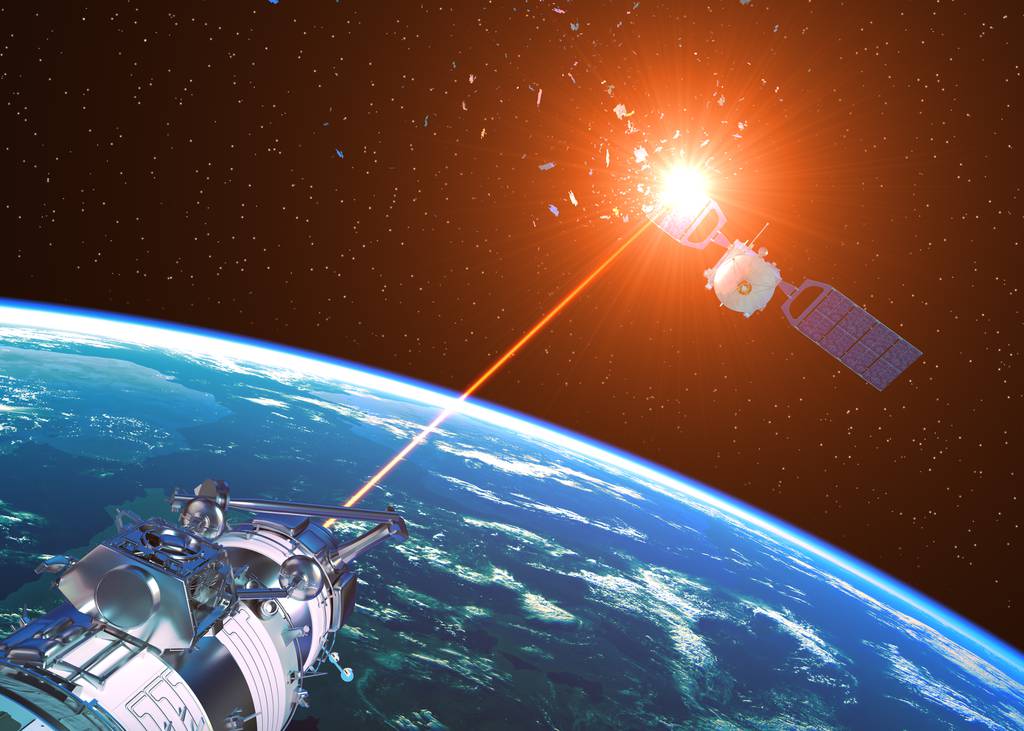Space Warfare

The outer space arena has become more integral to the earth than ever before. The number of space assets has increased massively in the last 50 years. This rapid increase in the importance of space has led to an increase in space-faring nations which are conducting military missions in space. They operate on the principle of National Space-power which is a totality of a nation’s use of space capabilities in pursuit of national prosperity and security. This gave rise to the pursuit of space superiority through which state can deny space domain freedom of action to its adversaries which is a crucial fuel behind increasing space warfare.
Space warfare is simply a combat that takes place in outer space. This concept has its roots in the Space Race of 20th Century competition between two Cold War adversaries. Both countries developed anti-satellite weaponry along with working on information technology as well as cyber warfare and cyber security.

United States:
The United States is the current leader in the world of global space affairs. While it wasn’t the first nation to use taxpayer money for the exploration of the “unknown frontier”, it used its jealousy and fear of the Soviet Union’s space ambitions to propel itself slowly but surely to the top of the pyramid of hierarchy in space. The United States and the Soviet Union competed in the “Space Race” from the 50s to the late 80s, a global battle of wits and money, the United States was able to win the space race because of its economic capabilities and solid technical base. The United States in the modern day uses its extensive space program to support both its civil and military interests. The United States is the major participant in the International Space Station and solely operates the Global Positioning System, originally developed to provide navigational data to the US military, both for the military and civilian users. But the United States does not see its position in space as certain. Its main vulnerability in space is from incoming ballistic missiles and cyber-attacks on its civilian and military satellite infrastructure. Thus, in the current era, the US feels threatened in space from China, Russia, North Korea and Iran.
United States has made agencies such as the Missile Defense Agency (MDA) to protect itself and its allies from missile threats emerging from space. The Agency has been to date responsible for developing and maintaining programs for missile defense. The United States has developed new military satellites and is participating with its allies in the defense of space. But by far the most important action it has taken in this regard to date has been the formation of the United States Space Force.

Russia, a state labelled as one of the two rivals of cold war and space race. The year 1957 marks the lead of Soviet Union in the space race. This was made possible when Soviet Union achieved the first successful artificial satellite launch on October 4, 1957 of Sputnik 1, and sent the first human to space with the orbital flight of Yuri Gagarin on April 12, 1961.
Russia is arguably the leading space power. It has the primacy of launching the most manned space flights than other countries combined. Secure World Foundation (SWF) is reported to have said that Russia is expanding its counter-space weapons and capabilities. Through electronic warfare, Russia is extending its anti-access/area denial approach in outer space for developing offensive capabilities against ground-based space infrastructure. It is said that Russian civilian and military space program have the potential to be matched with that of the US. Some of the Russian capabilities include Anti-Satellite Systems, Military Space-Based Systems, Imaging Satellites, Signal Intelligence and Navigation Satellites.
China:
China claims its rise as a “peaceful rise”. Pentagon is facing a fearful question that Chinese aggressive rise in space may turn out to be the weapon to bring America down. China’s space mission is particularly impressive and aggressive. There are three factors which are showing an aggressive rise from China. China is building many distinct technologies for exploring space. Secondly the extraction and transport of energy sources from space to Chinese factories. The third is to show Darwinian safety valve for the earth. China has intentions to militarize space. It has believed that there are two ways of countering US in space. One method is to destroy all of their satellites. And the other way is to blind their inspection bird in space. China has already checked several ways of implementing its strategy. China is building anti-satellite weapons to kick US GPS system out of space. It is going to pollute the space and is also building and testing space kidnappers. The main goal of China to conquer space is to track the military movement and damage the US space system.
 Other emerging powers:
Other emerging powers:
There are other countries who have started making their efforts for space warfare. Some of the prominent countries include UK, France, India and Iran. UK is currently investing in increasing its capabilities in space. UK’s Europe-mate France has also announced an ambitious space weapons program in 2019 for the protection of its assets in space. This includes patrolling nano-satellite swarms, ground-based laser systems to blind-spying satellites, and machine guns mounted on satellites. Moving towards the east, Islamic Revolutionary Guards Corps successfully launched a military satellite in 2020 to showcase Iran’s technological advancements. Previously, Iran also hacked US GPS to force land a US drone. Another emerging power India established her Defense Space Agency in 2019 & became only the fourth country in the world to shot down a satellite during her Mission Shakti. The motivation behind India’s focus towards space warfare is due to its animosity towards China & Pakistan.
Global Implications:
This securitization of outer space can lead towards a renewed space race and possibly a new Cold War based on the pursuit of space hegemony. This will have numerous global implications such as GPS failure, blackout in countries, increase in Cyberattacks & Espionage and possible cancellation of the Outer Space Treaty.
Conclusion:
As Mark Twain said “History doesn’t repeat itself but it often rhymes,” there exists a huge chance of revival of the cold war with NATO and Russia/China being the two most pivotal alliances. Therefore, the future looks dark considering the global implications of space warfare. Thus, there’s little time to dilly dally otherwise the world will suffer massively and stars wars will be our future. As it is difficult to stop proliferation later, there’s an urgent need for collective action by states because all states will be equally vulnerable to potential future threats. Therefore, states should opt for banning weaponization or at least consider placing limits on militarization in space just like arms control treaties.